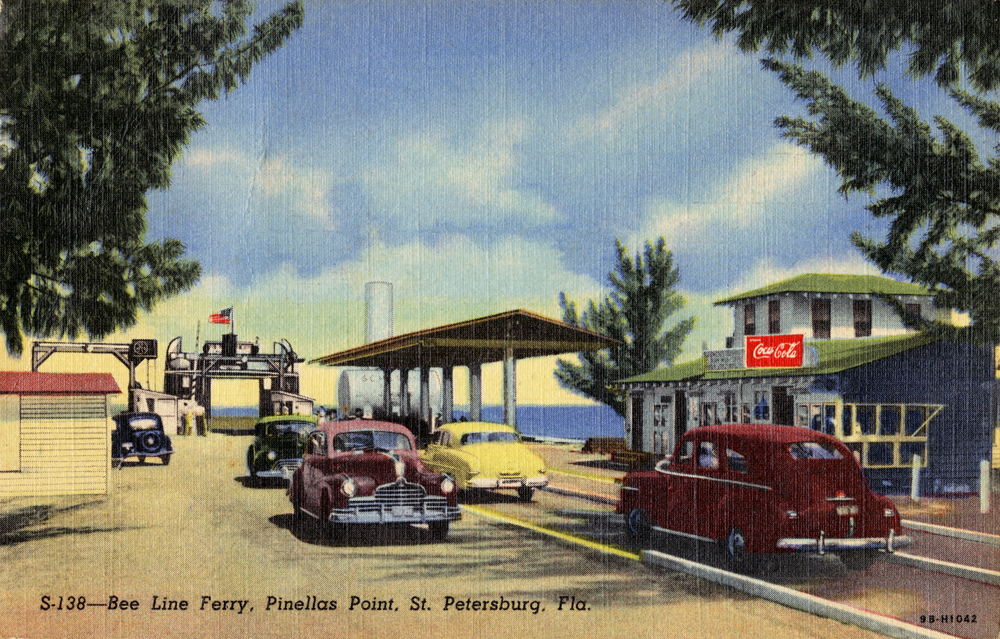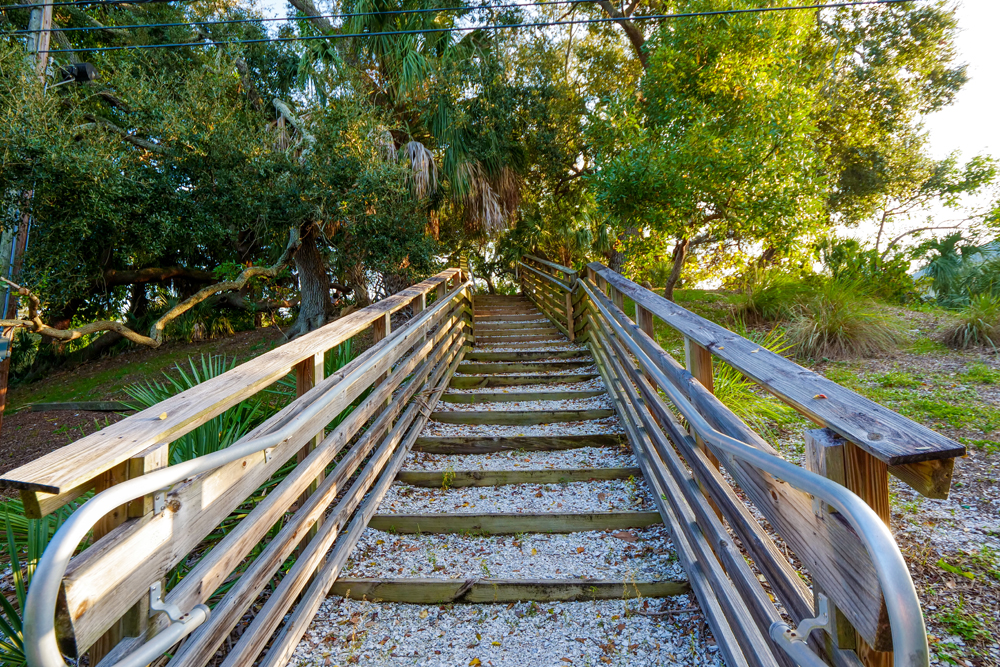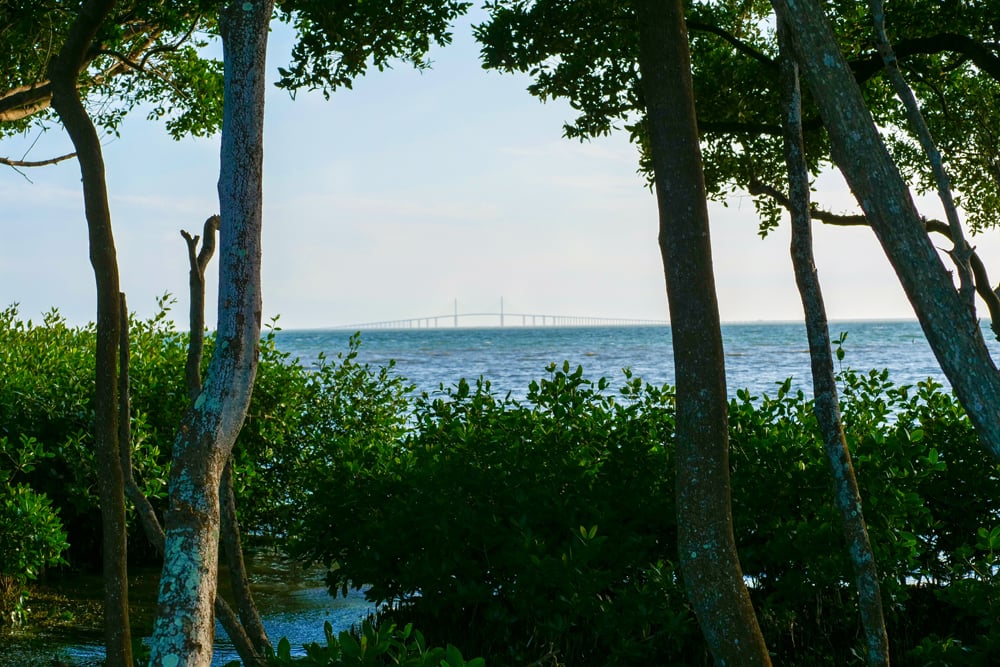A good friend and I were discussing the many named neighborhoods that exist within the boundaries of St. Petersburg. When The Greater Pinellas Point Neighborhood came up, I was truly surprised to learn that my friend had never heard of the “Pink Streets”, making it a good subject for this story. Before submitting it, I sent the article to Barbara Ellis, the president of The Greater Pinellas Point Civic Association whose home is on the Pink Streets to see what she thought.
Did I mention that Barbara Ellis also happens to be my son-in-law’s mother? At any rate, I was told that residents of the Pink Streets were pretty particular about making certain all my information was correct. Accordingly, she asked Gerry Lembke, the neighborhood’s historian, to send me “A History of The Pink Streets”. I would like to take this opportunity to thank him for his help and acknowledge that he is greatly responsible for the following abridged version of my tale. Bee Line Ferry, Pinellas Point, St. Petersburg, Fla. 1949. Hand-colored postcard. State Archives of Florida, Florida Memory.
The First Concrete (Pink) Streets
Land in what is now known as the Pink Streets and some nearby areas was acquired by Marguerite Cook in 1906 with money from her husband’s Publishing Company in Elgin, Illinois. The land was left virtually untouched for almost 20 years. In 1925, the year Pinellas Point was annexed into the City of St. Petersburg, Marguerite and her son, George E. Cook, formed Murok Realty Corp. which was responsible for the development of the Pink Streets. Pink dye was added to the concrete mix to create its distinct color. Not only were the streets pink, they were the first ones paved with concrete in Pinellas County.

The Bee Line Ferry
It must have been a challenge to entice prospective buyers to build homes “in the middle of nowhere”. In the 1920’s, the Pink Streets were quite isolated from the rest of the City of St. Petersburg. There was only the Bayou Castle, built by Edward Branch, beginning in 1906 and completed around 1908 on the northeast corner of 55th Avenue S and 4th St. There were a few farms south of what is now 54th Avenue S. Also “in the middle of nowhere”, The Bee Line Ferry began operations in 1926. The ferry ran from 4th St. S and Pinellas Point Drive (which is now Bay Vista Park) in Pinellas County to Manatee County at Piney Point just south of the Hillsborough – Manatee County line.
This was at a time when St. Petersburg was enthusiastically promoted throughout the Eastern United States, resulting in the first “population boom”. Murok Realty was not to be outdone in promoting the advantages of its development. An ad in the St Petersburg Times on November 5, 1925 entitled, “The Fabric of Life”; and a 1927 brochure that called Pinellas Point “The Healthiest Spot on Earth”; spoke of the area’s curving roads with their red coloration and touted countless reasons to reside in the Pink Streets.
The Pink Streets Neighborhood is bordered by Pinellas Point Drive on the north, 10th Street S on the east, Tampa Bay on the south, and the end of Serpentine Circle (street number 2199) on the west. The main entry into the area from Pinellas Point Drive is 14th St. S which was originally called “The Concourse”. By 1930, at least 17 homes had been built. Among them are the two most famous homes: the previously mentioned Bayou Castle and the Tippetts home at 7300 14th Street S, the residence of Katherine Bell Tippetts, an influential woman in the history of St. Petersburg.

Preservation as Progress
The Great Depression forced the bankruptcy of Murok Realty and the suspension of development in the Pink Streets until well after World War II. In 1940, Edward C. Wright purchased the undeveloped Pink Streets land and, over time, he sold most of it to Rutenberg Development. But not the Tocobaga Indian Mound! Unlike most other developers on Florida’s west coast, he apparently respected the historic significance of this temple mound. He donated the mound and surrounding property to the City of St. Petersburg in 1958. The Pinellas Point Mound became an official historical and archeological landmark in 1993.

Over time the Pink Streets became severely cracked and beyond repair. They were finally torn up in 1990 and 1991. The city was against repaving the area with the signature pink concrete. The Pink Streets homeowners were able to eventually prevail and, at a cost of several thousand dollars to each resident, the neighborhood was able to retain the distinct color of their streets.
Today, the Pink Streets remains one of the premier neighborhoods in St. Petersburg. It is well worth the 10-minute trip from downtown to wander this beautiful area, perhaps spending some quality time in the waterfront Pinellas Point Park or the Pinellas Point Tocobaga Indian Mound.




